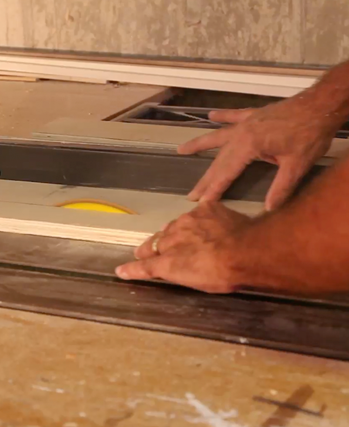
Wood dust is produced when tools and other machinery are in the process of cutting, sanding, or shaping wood. Large volumes of wood dust are present in applications such as carpentry, sawmill, and cabinet and furniture-making work environments.
It's crucial to the health and safety of woodworkers that workshops are kept clean and free of debris. When uncontrolled, wood dust settles on work surfaces, floors, and equipment - overexposure to these conditions creates higher risks of health and safety injuries.
Wood dust is associated with eye, nose, and throat irritation, dermatitis, and respiratory system issues like allergic reactions. Wood dust is also recognized as a known carcinogen by the U.S. government. Dust collection systems capture wood dust at the source to remove it before it enters the airstream.
Collecting and removing wood dust plays a key role in the comfort and safety of machine operators and other woodworkers nearby. It's also crucial for meeting regulatory requirements around combustible dust and indoor air quality.
The Occupational Safety and Health Administration (OSHA) has combustible dust standards that require employers to keep dust accumulations from creating explosion, deflagration, or other fire hazards.
OSHA also enforces permissible exposure limits (PELs) for wood dust to protect worker health, with additional requirements around air monitoring, respiratory protection, and hazard communication.
The National Fire Protection Association (NFPA) provides detailed guidance on dust hazard analysis, engineering controls, housekeeping, and other measures in its NFPA 654 and NFPA 664 standards.
ACS specializes in woodshop air filtration and wood dust ducting systems that help businesses comply with OSHA, NFPA, and other applicable standards. Our systems are built to meet the size of your space and the demands of your application.
Air filtration systems for wood dust are made available in a range of styles and system configurations. They work by pulling air through various filter media to capture dust, fumes, smoke, and more. Our air filtration systems feature a friendly plug and play design - you can simply hang or suspend Blue Ox air cleaners for immediate filtration.
When selecting and sizing air filtration systems, it's important to consider factors like the required air changes per hour (ACH) and the filter efficiency needed for the contaminants present.
The air changes per hour refers to how many times the total air volume of a space is circulated through the filtration system in one hour. Recommendations vary, but most woodworking guidelines suggest 5-10 ACH as a minimum. Higher ACH may be required for processes that generate larger amounts of particulate.
Filter efficiency ratings indicate what percentage of particles a filter can capture from the airstream. MERV, HEPA, and other filter ratings define the size ranges of particles the filters can remove effectively.
Higher efficiency HEPA filters may be used when capturing hazardous wood species or for extremely tight air quality control.
Our specialists can analyze your woodshop's square footage, equipment layout, wood types processed and more to determine the ideal air cleaner models, quantities, filter specs and other requirements. Proper sizing ensures the air filtration system provides sufficient ACH and particle capture for a healthy, productive workspace.
Wood dust ducting plays a critical role in an effective dust collection system design. It can be installed on machinery to transfer contaminated air away from the work area, reducing health, safety, and production risks. Proper ducting captures wood dust at the point of generation before it can disperse into the ambient air that workers breathe.
Nordfab Ducting from ACS connects to a variety of woodworking machines like saws, sanders, routers and separators for collecting wood dust and other waste. The ductwork is constructed from sturdy galvanized and stainless steel materials designed to withstand rugged wood shop environments.
Quick-release clamps make it easy to reconfigure ducting runs as needed while still providing an air-tight seal once clamped into place.
Ducting system design factors like smooth interior walls, proper duct sizing, and minimizing bends all impact airflow and overall dust capture efficiency.
Duct run lengths and layout should be optimized based on the machinery layout and dust collector specifications. Regulatory standards like NFPA 664 provide guidance on proper ducting construction and installation requirements.
Our team can evaluate your facility layout and design a high-performing ducting network customized for your operations. We account for duct material type, diameter, length, branches and airflow to maximize dust capture velocity while minimizing static pressure losses.
Proper ducting is essential for a dust collection system to operate effectively while creating a safer, healthier workspace.
Call Us Today -or- Request A Quote! Request a Quote